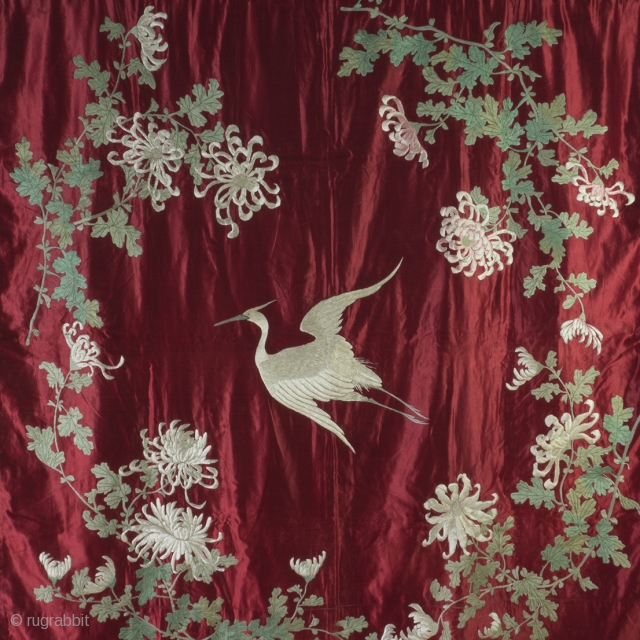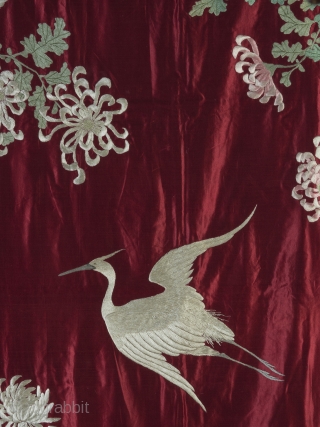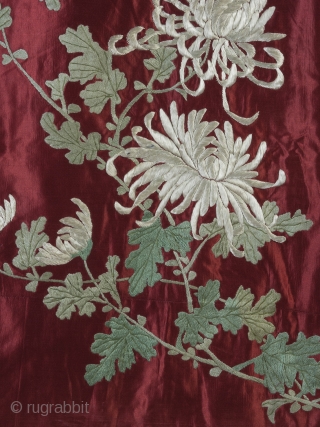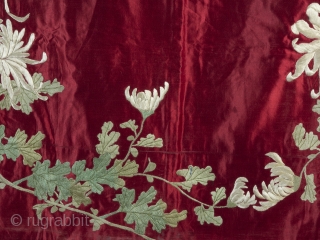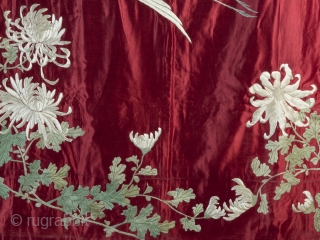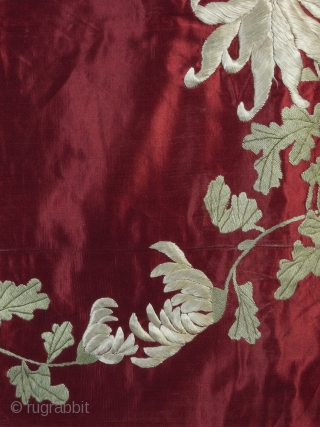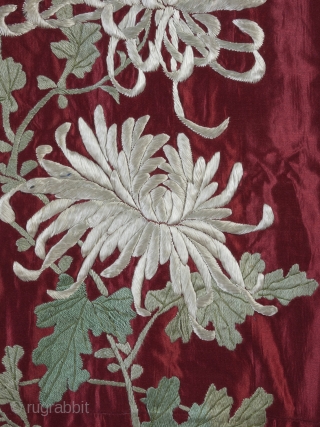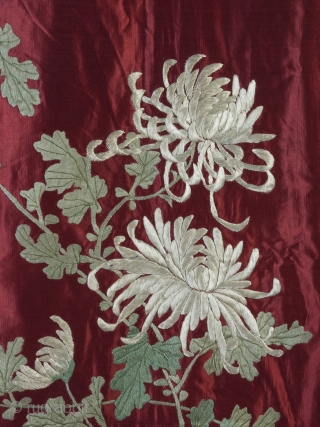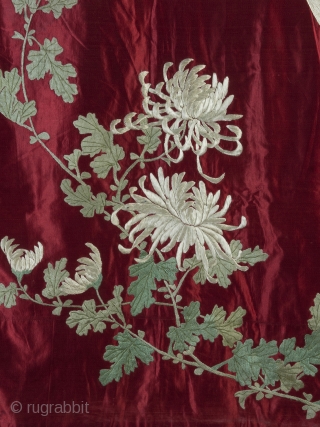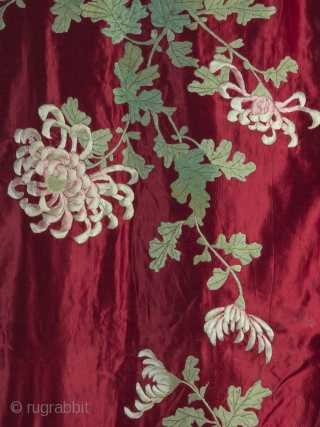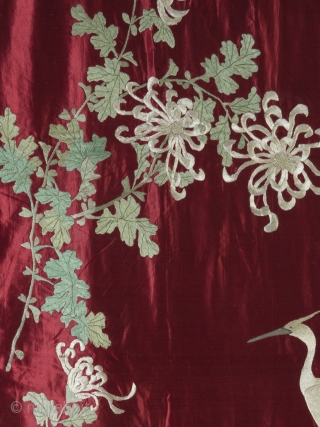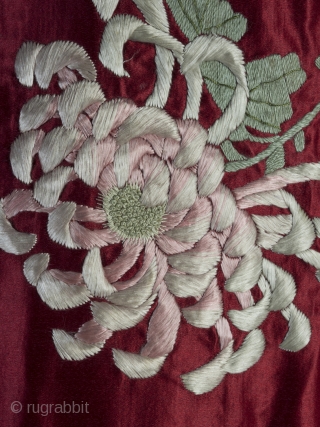Back
Very rare 19th century Japanese red silk Fukusa. 132cm/52 inch square.
An exceptionally decorative and well preserved piece. The central crane is beautifully drawn and executed; rendered in monotone silk, it's form delineated purely by the array of different stitches used to represent the back, wing and tail feathers. Surrounded by an asymmetric array of chrysanthemums, their green leaves (with an ombre effect executed with astonishing skill) provide a striking contrast against the deep red.
Very few examples of red silk embroideries from this period now exist. The red dye, probably Benibana, derived from safflower petals is extremely costly to produce and, being a fugitive dye, is prone to colour changes and degradation. This is a luxurious item, made for the very top end of the export market and a rare survivor.
Overall condition is excellent, the silk ground is clean and bright with extremely strong, consistent colour throughout. There is some fading and wear to the bottom edge. The silk has worn through in a few small areas along the bottom edge, we have had these professionally conserved (a section of colour matched silk is placed behind the damage to stop further degradation, and the remaining silk fibres are bound with invisible thread). There is a small section of braiding missing at the bottom right corner, around 10cm. The embroidery throughout is clean, bright and without any loss of colour. There is one loose thread that we have seen (at bottom right, on a flower stem) and some of the embroidery on the birds back is not as tight to the ground as it would have been new, but there are no losses or pulled threads. We have had a colour matched silk pole sleeve attached for hanging, otherwise in original condition.
Please see the Google Drive link here for more images including close ups of damage/restoration: https://drive.google.com/file/d/1SBQeCs8U2N_QlLxatyDw4t-KJFbtfHCh/view?u...
About Fukusa:
These textiles were originally used in the ritual of gift giving, the gift being draped with the fukusa, admired then returned to the donor. These traditional fukusa were made from the standard 38cm bolts of silk used in the production of kimono. Following the Vienna Worlds Fair, (1873) which introduced fukusa to the western world, the Kyoto silk merchants set about adapting their infrastructure to accommodate the new demand for larger silks to be displayed in the homes of wealthy europeans. Initially these larger pieces were made from two or more pieces of silk stitched together, before larger looms and wider bolts of silk could be produced. This piece has been made from one large and one smaller section to form the ground, suggesting it is an early export. We would tentatively date around 1880. Much larger pieces were being produced from a single silk ground towards the end of the century.
UK Mainland shipping is £15 by standard parcel courier. Please contact for international shipping price
price:
£3400
- Home
- Antique Rugs by Region
- Category
- Profiles
- Post Items Free
- Albums
- Benaki Museum of Islamic Art
- Budapest: Ottoman Carpets
- Gulbenkian Museum
- Islamic Carpets. Brooklyn
- Islamic Textiles. Brooklyn
- Konya Museum: Rugs
- MKG, Hamburg
- MMA: Caucasian Carpets
- MMA: Mamluk Carpets
- MMA: Mughal Indian Carpets
- MMA: Ottoman Carpets
- MMA: Safavid Persian Carpets
- MMA: Turkmen Rugs
- McCoy Jones Kilims
- Ottoman textiles. Met
- Philadelphia Museum
- Rugs and Carpets: Berlin
- Seljuqs at the Met
- TIEM, Istanbul: Carpets
- V&A: Classical Carpets
- Vakiflar Carpets: Istanbul
- Baluch Rugs: Indianapolis
- Gallery Exhibitions
- Jaf an Exhibition
- Alberto Levi Gallery
- Andean Textile
- Christie's London: 2016
- Francesca Galloway
- HALI at 40
- ICOC Washington, DC 2018
- Jajims of the Shahsavan
- London Islamic Week April, 2018
- Mongolian Felts
- Navajo Rugs: JB Moore
- Persian Piled Weavings
- SF Tribal & Textile Art Show 2020
- SF Tribal 2019
- Sotheby's: C. Alexander
- Turkish Prayer Rugs
- Turkmen Main Carpets ICOC 2007







